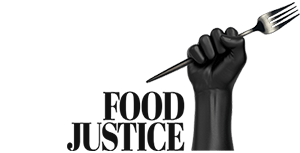
Maverick Life
Nutritional information: Where do we find it?

The National Health and Nutrition Examination Survey, last published in 2014, found that a large part of South Africa’s population is not only food insecure, but also lacks dietary diversity and is nutrient deficient. Is it a case of availability and accessibility to basic nutritional information?
Section 27 of the South African Bill of Rights states that “everyone has the right to have access to sufficient food and water”, and that “the state must take reasonable legislative and other measures, within its available resources, to achieve the progressive realisation of each of these rights”.
Despite the progressive intent of Section 27, South Africa is malnourished and hungry.
In a 2019 report examining hunger and food inadequacy published by Statistics South Africa, 13.4 million households were found to have “inadequate or severely inadequate access to food” and about “1.6 million households experienced hunger” in 2017.
A 2016 paper published by the University of the Western Cape’s Department of Dietetics and Nutrition spotlights the link between the rise of deaths from non-communicable diseases (NCDs) – diabetes, cancer, stroke and heart disease – and the country’s unhealthy diet which accounted for 43% of recorded deaths at the time the paper was published, stating: “Poor diet now generates more disease than physical inactivity, alcohol and smoking combined.”
The paper points out that the marked rise in NCDs comes from a “nutrition transition” defined as a change from traditional diets comprising fruits and vegetables, roots, grains, legumes and little animal food products, to a so-called Western diet characterised as “nutrient-poor” and comprising cheap, processed foods with high quantities of sugar, salt and fat.
“Around 50 years ago, we had a situation where significantly fewer people were morbidly obese and the majority of people dying from nutritional issues were dying from malnutrititon through Africa and Asia,” says Gqeberha-based corporate wellness physiologist at Healthyworx, Riaan van der Walt.
“We now find ourselves in a situation where, although there might be a massive quantity of food available to the vast majority of the world’s population, unfortunately, it is not quality food – rich in calories but poor in nutrients especially micronutrients like vitamins and minerals – so it is not meeting nutritional needs and it is creating an overweight population and causing illness,” Van Der Walt adds.
Where can we find nutritional information and is it accessible?
According to the UN’s Food and Agriculture Organization, in a bid to reduce malnutrition, micronutrient malnutrition and diet-related communicable and non-communicable disease, in 1992, the Nutrition Society of South Africa formed a working group led by Professor H Vorster and developed the country’s first Food-Based Dietary Guidelines (FBDG), designed in collaboration with the Department of Health, the Medical Research Council, academics, food producer organisations and UN agencies. They were published in 2003 and revised in 2012.
The World Health Organisation (WHO) is the gold standard for anyone with access to the internet to look for nutritional information that is scientifically based, scientifically confirmed and that we can lean on as the best advice to follow.
Albeit lengthy at 165 pages, these are user-friendly guidelines based on scientific evidence on the relationship between our health and what we eat. They are available to read and download online.
The guidelines seek to clearly demonstrate and define “food and beverage combinations that will lead to a diet that is adequate, that meets nutrient need and that is, at the same time, prudent, for example, which lowers the risk of non-communicable diseases (NCDs)”, and ultimately, influence eating behaviour for the better.
Van Der Walt says that, for him, the World Health Organization (WHO) is the gold standard for anyone with access to the internet to look for nutritional information that is scientifically based, scientifically confirmed and that we can lean on as the best advice to follow.
“The WHO is a very solid place to look for [nutritional] information, although it is not a very ‘sexy’ place to look for that information. It is bland and scientific. The general reader is not going to go there and read reams of information on percentages of saturated fats,” he says.
However, Van Der Walt says there is more user-friendly, practical nutritional information out there. “I usually point clients to Jamie Oliver as a fantastic reference and springboard for starting to cook and eat healthier because Jamie Oliver’s food is whole-food, home-cooked, accessible meals.”
The British chef, who has dominated culinary channels across the world for more than two decades, has been a champion of making healthier eating more accessible to the general public with cookbooks and television series such as Jamie’s 15-Minute Meals and 5 Ingredients: Quick & Easy Food, as well as global campaigns to address child obesity through compulsory food education in schools.
“Jamie Oliver is a nice way to turn the facts and figures that the WHO or FBDG gives us into nice, enjoyable food,” Van Der Walt adds.
He also recommends googling words like “whole food” and “whole food diet” and to look out for wellness physiologists and dieticians who regularly update their websites with healthy eating resources and dietary advice.
“Things to stay away from when it comes to nutritional advice are fad diets. While diets like ‘Banting’, the ‘Atkins diet’, the ‘Oprah diet’, the ‘Huisgenoot diet’ and ‘Weight Watchers’ have proven to work effectively in the short term, none of them has effectively been proven to work in the long term. Only long-term change in the diet instead of short-term, crazy changes that are unsustainable is proven to be the effective way,” he explains.
It is clear from Section 27 of the Bill of Rights that the government has a responsibility to ensure that conditions are as conducive as possible to fulfil the right to have access to sufficient food and water.
“Most initiatives have been critiqued for lack of action.”
The 2016 paper published by the University of the Western Cape states that “overall, positive policy steps have been made at the national level”, including the Integrated Food Security Strategy, the Integrated Nutrition Programme, the National School Nutrition Programme, the National Policy on Food and Nutrition Security, and the National Development Plan which, along with the aim to educate and promote healthier eating habits, speak to the reduction of “trans-fatty acids; regulations to reduce salt in processed food; consideration to be given to the ban of junk food advertisements directed at children during key television programmes; the taxation of undesirable processed foods and the exemption of healthier choices from taxation; and better control of food and nutrient supplements”. However, the paper also says “most initiatives have been critiqued for lack of action”.
“There is a poor level of understanding, even in educated people, when it comes to what food should be, and is to us, and yes, I very much think the national Health Department should be involved in doing more to communicate nutritional guidelines and their accessibility, but I sympathise with the task they have in dealing with the complexity of these issues,” says Van Der Walt.
According to an article published in 2020 by Unicef South Africa on malnutrition and feeding, “chronic malnutrition is an underlying cause for half the childhood deaths in South Africa”.
Byron la Hoe of the Western Cape health department explains that the department has developed a number of pamphlets that are shared with clients at healthcare facilities, advocacy events, seminars and workshops.
“Both printed material and electronic materials are available at healthcare facilities and from the department’s website respectively. We also have material that was developed in collaboration with stakeholders on various topics relating to health,” he says.
But do people know this information exists?
La Hoe says that material containing nutritional information is loaded onto the department’s website and can be downloaded as required, while printed material is available at health facilities.
“Nutrition information is available as leaflets and pamphlets, but the available material does not cover the complete life course, and some is more targeted material used in patient education. Then, there is also material targeted at both patients and the general population, such as breastfeeding promotion material and material on chronic conditions.”
The department had also developed a Health Calendar which reflected all the focused days and weeks related to health, and before the Covid-19 pandemic, some of the days were celebrated with planned events for the community which included education and distribution of material.
“Some of the material is also used in the private sector as patient education, which assists in alignment of messaging throughout the service platform. The Covid-19 pandemic has seen greater use of the social media platforms to share educational material, but this, of course, also has its own limitations,” says La Hoe.
Is the available information accessible to all?
Language in South Africa limits access to the correct, important health information, including about nutrition.
While there are places where nutritional information can be accessed by anyone with data or an internet connection, in a country that has 11 official languages, making sure this information can be interpreted by every citizen is no small task.
La Hoe explains that the official languages of the Western Cape are English, Afrikaans and isiXhosa and that the department, at a provincial level, has the capacity to translate information into these languages.
“When there is a request to make our information available in other languages in the province, like SeSotho or isiZulu, we outsource the translations through Language Services at the Department of Cultural Affairs and Sport,” he says, adding: “The department is committed to ensuring that the information is accessible in all official languages.”
The 2016 paper published by the University of the Western Cape found that research “exists to support the benefits of focused mass-media campaigns, food-pricing strategies, school-procurement policies and worksite wellness programmes”.
When asked whether he thought the national Health Department could be doing more to communicate nutritional health guidelines and related information, La Hoe says: “Provinces are supported by the National Office in the planning for nutrition advocacy with regards to standardised messaging, print-ready artwork, identification of partners and stakeholders support, etc. The call has always been from provinces to expand the influence platform in terms of television, which is often out of the reach of the provinces.”
Van Der Walt says we need more quality information and education campaigns in spaces like public schools to get children to understand from a young age what healthy eating looks like, with a focus on whole foods.
The 2016 paper published by the University of the Western Cape concludes that “to improve dietary patterns and reduce chronic diseases will require a sustained public health effort. This must include consideration of environmental factors and the conditions in which people live and make choices”.
“Existing efforts that address initiatives of NCD prevention, their proximal determinants and contributing environmental factors, have to be strengthened and sustained in order to combat the current trend and achieve a real reduction in the NCD-related burden,” the paper says.
“Additional rigorous measures are also required to continue to address the common risk factors for NCDs in South Africa. The South African government should develop a coordinated, specific plan to make healthy foods more available, affordable and acceptable, and existing related policies should be implemented more effectively.” DM/ML

















 Become an Insider
Become an Insider
Comments - Please login in order to comment.